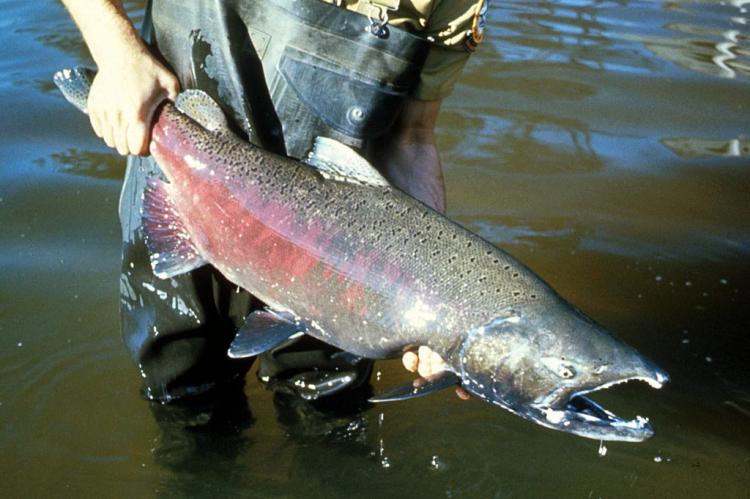Why are the larger chinook salmon shrinking?
Over the last forty years, the largest chinook salmon have shrunk in physical size, and this may be due to a number of different factors.
A recent study by the University of Washington has found that the largest and oldest Chinook salmon are for the most part no longer present in the population along the West Coast of the United States.
The researchers examined nearly 40 years of data from both hatchery and wild Chinook populations from California to Alaska, looking at patterns that emerged over this time period and across thousands of miles of coastline.
The findings of the study was published on 27 February in the journal Fish and Fisheries.
There are several possible reasons for the decline:
Commercial and sport fishing
For years, these activities have tended to target the larger-sized Chinook. However, due to fishing regulations implemented in the last 30 years to promote sustainable fishing, the pressure from these activities have somewhat eased. In addition, the reductions in Chinook size has been more rapid in the past 15 years.
Predatory pressure
Some marine animals have shown reference for consuming salmon, and the resident killer whales in particular have shown a preference for this species of fish. According to senior author Daniel Schindler, UW professor of aquatic and fishery sciences, “We know that resident killer whales have a very strong preference for eating the largest fish, and this selectivity is far greater than fisheries ever were.”
Although these two factors obviously comprise part of the reason for the larger Chinook salmon's decline, other factors are possibly in play as well.
“Chinook are known for being the largest Pacific salmon and they are highly valued because they are so large,” said lead author Jan Ohlberger, research scientist in the School of Aquatic and Fishery Sciences at UW. “The largest fish are disappearing, and that affects subsistence and recreational fisheries that target these individuals.”
Despite differences across the different Chinook populations, most populations experienced a distinct size reduction in the last 40 years. In the more extreme cases, the reduction was as much as 10 percent shorter in length. In addition, the scientists discovered that Chinook populations from Alaska showed the largest reduction in age and size, with the Washington salmon trailing a close second.
“This suggests that there is something about the larger ocean environment that is driving these patterns,” said Ohlberger. “I think fishing is part of the story, but it’s definitely not sufficient to explain all of the patterns we see. Many populations are exploited at lower rates than they were 20 to 30 years ago.”


